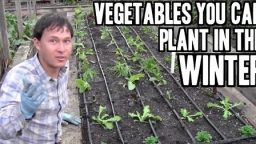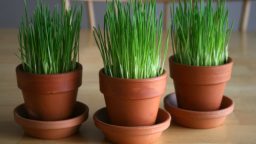This time of year, even those that are living in a warmer zone are experiencing declining harvests in the garden. Adding a layer of protection can help, but if you haven’t already done this it’s a little too late. The good news is that even if you haven’t protected your crops from the cold, or even if you haven’t started a garden at all yet, you can still enjoy the health benefits of dark leafy greens this time of year thanks to wheatgrass. Here are some of the nutritional facts, and basic growing and harvesting instructions for wheatgrass.
- If you purchase wheatgrass seeds from your health food store in bulk the price is not quite as high as if you are purchasing small amounts.
- Measure out the desired amount and place it in a canning jar, cover it with water and put a breathable lid on. Change the water out every 12 hours for a day or so until you see the sprouts.
- Once the wheat has spouted, it can be placed in a shallow tray or pie tin with potting soil, keep the soil moist and place it in a location where it can get the most sun possible. You can speed its growth with a CFL, though this should be used a supplement and not it’s primary light.
- When the blades spilt into two is when they are ready for harvesting.
- To harvest your wheatgrass simply cut a clump with a pair of scissors and juice it. You should be able to get three harvests from one crop, though the last harvest will probably not taste as good since the sugar levels might be lower.
- Wheatgrass juice offers the most health benefits and nutrition if it is consumed fresh, this is why it is best to grow it yourself rather than waste money on buying dried products or bottled juices.
- Wheatgrass juice contains Vitamins A, B (in trace amounts that are formed from organism that live on the plant and not by the plant so the FDA says that there is no vitamin B in wheatgrass juice), C, E, I, and K. It is also a source of chlorophyll, pantothenic acid, iron, zinc, copper, manganese, selenium and even contains protein.
While the specific claimed health benefits are mostly unsubstantiated by scientific research there is no shortage of people who personally claim to have benefited from this superfood for a myriad of different diseases and disorders including cancer, obesity, anemia, constipation, and detoxing from heavy metals. During this season of elevated threats of bacterial and viral infection, stay at your healthiest with fresh greens courtesy of wheatgrass.
If you enjoyed this, you might also like….


